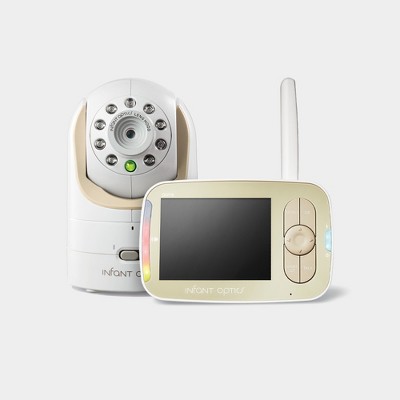Baby Monitors: A Comprehensive Guide for Modern Parents
Introduction
The arrival of a newborn brings immense joy and responsibility to parents. Ensuring the safety and well-being of their little one becomes paramount. Baby monitors have emerged as indispensable tools in this regard, providing parents with peace of mind and the ability to monitor their baby’s activities remotely. This comprehensive guide will delve into the world of baby monitors, exploring their types, features, benefits, and considerations for choosing the best one for your family.
Types of Baby Monitors
Baby monitors come in various types, each with its unique advantages and disadvantages. Understanding the different options available will help you make an informed decision based on your specific needs.
1. Audio Monitors:
Audio monitors transmit sound only, allowing parents to hear their baby’s cries, coos, and other noises. They are typically the most affordable and portable option, making them suitable for small homes or apartments.
2. Video Monitors:
Video monitors provide both audio and visual capabilities, enabling parents to see and hear their baby. They offer a higher level of reassurance and can be particularly beneficial for parents of newborns or babies with special needs.
3. Smart Monitors:
Smart monitors go beyond basic audio and video monitoring by incorporating advanced features such as temperature and humidity sensors, motion detection, and even two-way communication. They can be integrated with other smart home devices, providing a comprehensive monitoring system.
4. Wearable Monitors:
Wearable monitors are designed to be worn by the baby, typically on their foot or chest. They track vital signs such as heart rate, breathing, and temperature, providing real-time alerts if any abnormalities are detected.
Features to Consider
When selecting a baby monitor, consider the following features to ensure it meets your specific requirements:
1. Range:
The range of a baby monitor determines the distance it can transmit signals effectively. Choose a monitor with a range that covers your entire home, including the baby’s room, your bedroom, and any other areas where you may need to monitor your baby.
2. Battery Life:
Battery life is crucial for portable monitors. Look for monitors with long battery life or rechargeable batteries to avoid frequent interruptions.
3. Night Vision:
Night vision is essential for monitoring your baby in low-light conditions. Choose a monitor with clear night vision capabilities to ensure you can see your baby clearly even at night.
4. Two-Way Communication:
Two-way communication allows you to talk to your baby remotely, which can be soothing and reassuring. This feature is particularly useful for calming a fussy baby or checking in on them without entering their room.
5. Motion Detection:
Motion detection alerts you when your baby moves, even if they don’t make any noise. This feature can provide peace of mind and help you respond promptly to any potential distress signals.
6. Temperature and Humidity Sensors:
Temperature and humidity sensors monitor the environment in your baby’s room, ensuring optimal conditions for their comfort and well-being.
Benefits of Baby Monitors
Baby monitors offer numerous benefits for parents, including:
1. Peace of Mind:
Baby monitors provide parents with a sense of security and peace of mind, knowing that they can monitor their baby’s activities remotely.
2. Early Detection of Distress:
Monitors can alert parents to any unusual noises or movements, allowing them to respond promptly to their baby’s needs.
3. Improved Sleep:
Parents can rest more soundly knowing that they can be alerted if their baby wakes up or needs attention.
4. Remote Monitoring:
With video monitors, parents can check on their baby from anywhere within the range of the device, even when they are in another room or outside the home.
5. Enhanced Bonding:
Some monitors allow for two-way communication, enabling parents to interact with their baby and strengthen their bond.
Considerations for Choosing a Baby Monitor
Before purchasing a baby monitor, consider the following factors:
1. Your Home Layout:
The layout of your home will determine the range and type of monitor you need. Consider the distance between the baby’s room and the areas where you will be monitoring them.
2. Your Budget:
Baby monitors range in price from affordable audio monitors to feature-rich smart monitors. Determine your budget and choose a monitor that meets your needs within that range.
3. Your Baby’s Age and Needs:
The age and specific needs of your baby may influence your choice of monitor. For example, newborns may require more frequent monitoring, while older babies may benefit from features such as motion detection or temperature sensors.
4. Your Lifestyle:
Consider your lifestyle and daily routine when choosing a monitor. If you are frequently away from home, a monitor with a long range or remote access capabilities may be more suitable.
Conclusion
Baby monitors have become an indispensable tool for modern parents, providing peace of mind, early detection of distress, and enhanced bonding. By understanding the different types, features, and considerations involved in choosing a baby monitor, you can make an informed decision that best meets the needs of your family. Remember to prioritize your baby’s safety and well-being, and use the monitor as a valuable aid in ensuring their comfort and security.

